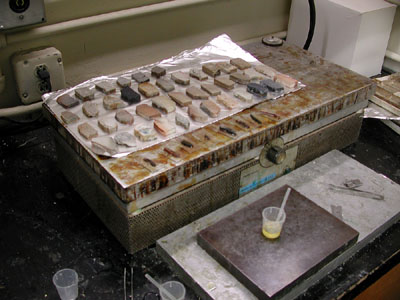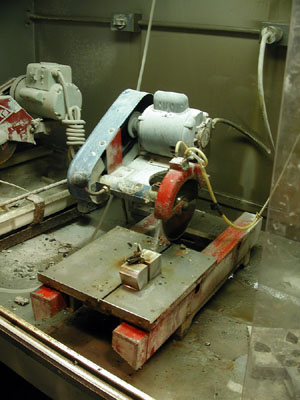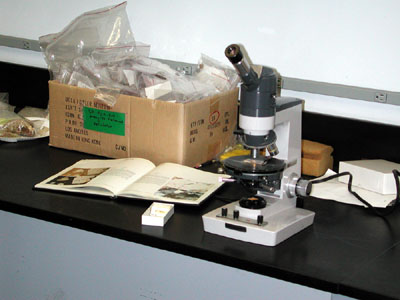|
MICROSCOPY |
|||||||

|

|
||||||
|
The flattened surface of a thin (2-5 mm.) cross-section
of a sherd is mounted to a glass slide using Crystalbond™ 509 on a hot-plate
set at about 120 °C. The sections are first dried on the same hot-plate
and the adhesive is allowed to be soaked up.
|
After the sample has cooled and set, most of
the excess material is cut off using a diamond abrasive saw. This saw can
also be used to reduce or reshape large samples. At least one surface is
flattened before drying and mounting.
|
||||||
|
|

|
||||||
|
Using a rotating lap and an abrasive powder
(silicon carbide 400) the sections are then ground until the quartz crystals
in the fabric do not longer show colors when viewed through a petrographic
(polarizing) microscope with both polarizer below and above the slide in
place ('crossed
nicols'). This lap is also used to flatten a section before mounting.
|
The finished slides are then dried, on the
hot-plate, and covered with a cover-slip held in place by Crystalbond™
509. After cooling and cleaning they are labelled and studied under
a polarizing (petrographic) microscope. Fabrics can be catalogued by the
percentage, number, size, shape, sorting and the identification of the mineral
inclusions.
|
||||||
|
|||||||
|
|||||||